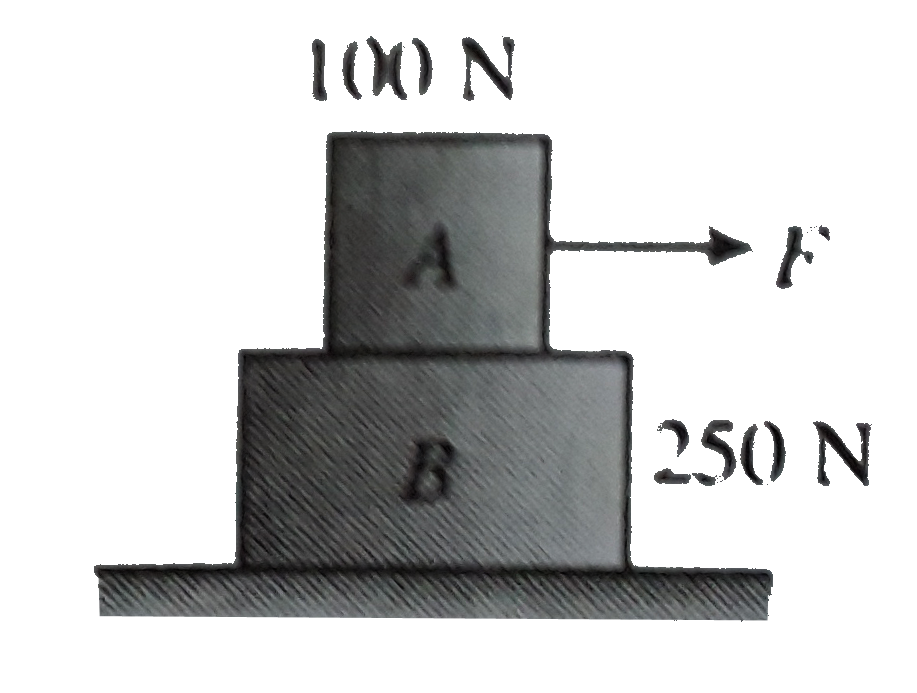A block of mass 1 kg lies on a horizontal surface in a truck. The coefficient of static friction between the block and the surface is 0.6. If the acceleration of the truck is 5m/s2, the frictional force acting on the block is…………newtons.
10N
5N
2.5N
20N
The correct Answer is:B
To solve the problem, we will follow these steps:
Step 1: Identify the given values
- Mass of the block (m) = 1 kg
- Coefficient of static friction (μ) = 0.6
- Acceleration of the truck (a) = 5 m/s²
- Acceleration due to gravity (g) = 9.8 m/s²
Step 2: Calculate the normal force (N)
The normal force acting on the block is equal to its weight since it is on a horizontal surface.
N=m⋅g
N=1kg⋅9.8m/s2=9.8N
Step 3: Calculate the maximum static frictional force (F_s)
The maximum static frictional force can be calculated using the formula:
Fs=μ⋅N
Fs=0.6⋅9.8N=5.88N
Step 4: Calculate the applied force (F_a)
The applied force on the block due to the acceleration of the truck can be calculated using Newton's second law:
Fa=m⋅a
Fa=1kg⋅5m/s2=5N
Step 5: Compare the applied force with the maximum static frictional force
Now we compare the applied force (F_a) with the maximum static frictional force (F_s):
- Fa=5N
- Fs=5.88N
Since the applied force (5 N) is less than the maximum static frictional force (5.88 N), the block will not slip, and the frictional force acting on the block will be equal to the applied force.
Step 6: Conclusion
Thus, the frictional force acting on the block is:
Ffriction=Fa=5N
Final Answer
The frictional force acting on the block is 5 Newtons.
---
- Mass of the block (m) = 1 kg
- Coefficient of static friction (μ) = 0.6
- Acceleration of the truck (a) = 5 m/s²
- Acceleration due to gravity (g) = 9.8 m/s²
The normal force acting on the block is equal to its weight since it is on a horizontal surface.
N=m⋅g
N=1kg⋅9.8m/s2=9.8N
The maximum static frictional force can be calculated using the formula:
Fs=μ⋅N
Fs=0.6⋅9.8N=5.88N
The applied force on the block due to the acceleration of the truck can be calculated using Newton's second law:
Fa=m⋅a
Fa=1kg⋅5m/s2=5N
Now we compare the applied force (F_a) with the maximum static frictional force (F_s):
- Fa=5N
- Fs=5.88N
Thus, the frictional force acting on the block is:
Ffriction=Fa=5N
The frictional force acting on the block is 5 Newtons.
Topper's Solved these Questions
- BOOK - NCERT FINGERTPS ENGLISHCHAPTER - LAWS OF MOTIONEXERCISE - HOTS8videos
LAWS OF MOTION
- BOOK - NCERT FINGERTPS ENGLISHCHAPTER - LAWS OF MOTIONEXERCISE - Exemplar Problems9videos
LAWS OF MOTION
- BOOK - NCERT FINGERTPS ENGLISHCHAPTER - KINETIC THEORYEXERCISE - Assertion And Reason10videos
KINETIC THEORY
- BOOK - NCERT FINGERTPS ENGLISHCHAPTER - MECHANICAL PROPERTIES OF FLUIDSEXERCISE - NCERT Exemplar5videos
MECHANICAL PROPERTIES OF FLUIDS
Similar Questions
A block of mass 1kg lies on a horizontal surface in a truck. The coefficeint of friction between the block and surface is 0.5. If the acceleration of the truck is 6ms−2 the acceleration of the block relative to ground is
View SolutionA block of mass m is moving on a rough horizontal surface. μ is the coefficient of kinetic friction between the block and the surface. What is the net force exerted by the surface on the block?
View SolutionA block of mass 0.1 kg is held against a wall applying a horizontal force of 5 N on the block. If the coefficient of friction between the block and the wall is 0.5, the magnitude of the frictional force acting on the block is :
View SolutionWhat is the value of applied force ‘F’ which is exerted at an angle θ with the horizontal on a block of mass ‘m’ placed on a horizontal rough surface, if the coefficient of static friction between the block and the surface is , such that the block is on the verge of moving horizontally?
 View Solution
View SolutionA block of mass 1 kg is pressed against a wall by applying a horizontal force of 10N on the block. If the coefficient of friction between the block and the wall is 0.5, magnitude of the frictional force acting on the block is
View SolutionA block weighing 20N rests on a horizontal surface . The coefficient of static friction between the block and surface is 0.4 and the coeffiecient of kinetic frictioni 0.20
a.How much is the friction force excerted on the block?
b. How much will the friction force be if a horizontal force of 5N is exerted on the block?
c. What is the minimum force that will start the block in motion ?
d. What is the minimum force that will keep the block in motion once is has been started ?
e. If the horizontal force is 10N what is the friction force?View SolutionA block of mass 0.1 is held against a wall applying a horizontal force of 5N on block. If the coefficient of friction between the block and the wall is 0.5, the magnitude of the frictional force acting on the block is:
View SolutionBlock B rests on a smooth surface .The coefficient of static friction between A and B is μ=0.4 where F=30N then

Acceleration of upper block isView SolutionA block of mass M is kept on as rough horizontal surface. The coefficient of static friction between the block and the surface is μ. The block is to be pulled by applying a force to it. What minimum force is needed to slide the block? In which direction should this force act?
View SolutionA block of mass M is kept on as rough horizontal surface. The coefficient of static frictionbetween the block and the surface is μ. The block is to be pulled by applying a force to it. What minimum force is needed to slide the block? In which direction should this force act?
View Solution

